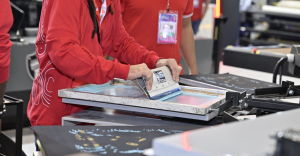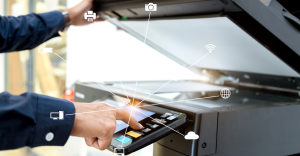3D Printing Has Taken a Key Role in Various Industries, Including Healthcare, Architecture, Education, and Fashion. The personalized items, gifts, and visual communication sectors are no exception. But do you know how to choose a 3D printer?
With the ability to transform digital designs into three-dimensional objects, it offers speed, customization, and cost reduction in prototyping and small-scale production. To take full advantage of these benefits, it’s essential to know how to choose the best option for your business.
The variety of models and technologies can be confusing for beginners. After all, each type of printer has specific features that cater to different needs. In this quick guide, find out what you need to know before investing in a 3D printer—and understand how it can transform your product portfolio.
Main Types of 3D Printing
Before deciding which printer to buy, it’s crucial to understand the most common technologies on the market and their differences. Each has advantages, limitations, and recommended applications, and having this information will help you make a more informed and strategic decision before investing.
- FDM (Fused Deposition Modeling)
The most popular and accessible technology. It uses plastic filaments (such as PLA, ABS, and PETG), which are heated and deposited layer by layer to form the object. Ideal for rapid prototyping, simple functional parts, and educational applications.
Advantages: Lower cost, wide availability of materials, easy maintenance.
Disadvantages: Rougher surface finish and less precision compared to other technologies. - SLA (Stereolithography)
Uses photosensitive resin cured by a laser beam. Provides high precision and detail, widely used in dentistry, jewelry, and design.
Advantages: Excellent resolution and finish.
Disadvantages: Resins are more expensive, requires a controlled environment and post-processing. - DLP (Digital Light Processing)
Similar to SLA, but instead of a laser beam, it uses a digital projector to cure the resin layer by layer. This makes printing faster while maintaining good precision.
Advantages: Faster than SLA, high resolution.
Disadvantages: Also requires post-processing and has high material costs. - SLS (Selective Laser Sintering)
Uses polymer powders (such as nylon) that are fused by a laser. Does not require support structures, allowing for the printing of complex geometries.
Advantages: High mechanical strength, ideal for functional parts.
Disadvantages: More expensive equipment, higher technical complexity. - MJF (Multi Jet Fusion)
Developed by HP, it also uses powders but with a fusion agent applied by jets. Widely used in the industry for final parts.
Advantages: High productivity, excellent mechanical quality.
Disadvantages: High initial investment, more focused on industrial production.
How to Determine Which 3D Printer Your Business Needs
The first step to making the right choice is to be clear about what you expect from the 3D printer. Questions like:
- What will be the primary use? Prototyping or final production?
- What type of parts do you intend to produce? Do they require high precision or are they simpler?
- What is the expected production volume?
- What is your budget?
- Do you have/will you have the technical knowledge to operate it?
For example: if you work in visual communication and need to create custom channel letters or three-dimensional elements for facades, a large-format FDM printer can offer excellent cost-benefit. On the other hand, if you produce detailed corporate gifts like personalized trophies or promotional miniatures, an SLA or DLP printer will be more suitable due to the need for refined finishes and precision in brand details.
Essential Factors to Consider When Buying Your 3D Printer
In addition to technology, other technical aspects are crucial to ensure the chosen 3D printer fulfills its role:
- Print Volume
Refers to the maximum size of the parts that can be printed. Check if the supported dimensions meet your project type. - Precision and Resolution
Indicates the level of detail the printer can achieve. The smaller the layer thickness, the higher the resolution. SLA, DLP, and MJF printers usually have higher resolution than FDM models. - Print Speed
Can directly influence productivity. FDM printers tend to be slower, while technologies like MJF and DLP are faster. - Material Compatibility
Check the materials accepted by the printer. Not all models work with different types of plastic or resin, which can limit future applications. - Reliability and Technical Support
Check the brand’s reputation, availability of spare parts, local technical assistance, and user community. Having support is essential to avoid unexpected downtime.
3D Printer: Information Is Essential Before Making a Decision
The right 3D printer can bring significant gains in time, efficiency, and competitiveness to your business. But for this to happen, the choice must be made based on information and planning. Understanding the technologies, defining your goals, and carefully evaluating technical aspects are fundamental steps.
Starting with a simpler model and evolving as demands grow is a viable strategy for many entrepreneurs. Over time, you’ll gain experience and clarity about the most important features for your type of production.
Tags





